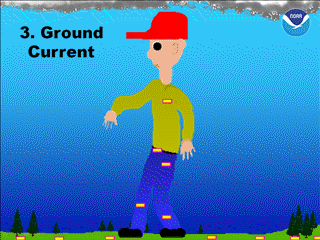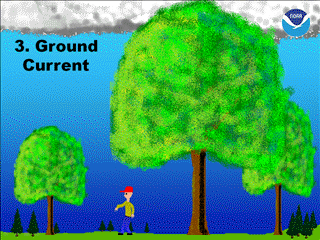Lightning is one of the leading weather related causes of death in the US. While the numbers have decreased in the past two decades, there are still an average of 49 people each year that lose their lives, with many more surviving but seriously injured. Ironically, many are hurt in non severe storms as the systems with warnings tend to be taken more seriously. Here are five ways lightning can strike people. Note, these are NOAA animations
1. Direct Strike
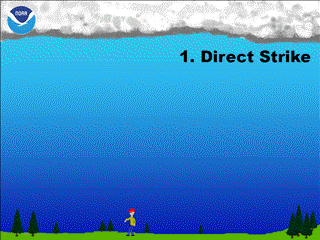
2. Side Flash

.
.
3. Ground Current
When lightning strikes a tree or other object, much of the energy travels outward from the strike in and along the ground surface. This is known as the ground current. Anyone outside near a lightning strike is potentially a victim of ground current. In addition, ground current can travels in garage floors with conductive materials. Because the ground current affects a much larger area than the other causes of lightning casualties, the ground current causes the most lightning deaths and injuries.Ground current also kills many farm animals. Typically, the lightning enters the body at the contact point closest to the lightning strike, travels through the cardiovascular and/or nervous systems, and exits the body at the contact point farthest from the lightning. The greater the distance between contact points, the greater the potential for death or serious injury. Because large farm animals have a relatively large body-span, ground current from a nearby lightning strike is often fatal to livestock.
4. Conduction
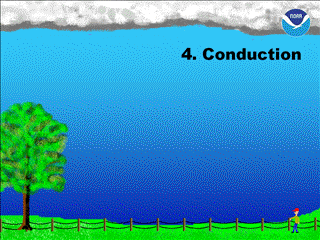
.
.
5. Streamers
While not as common as the other types of lightning injuries, people caught in “streamers” are at risk of being killed or injured by lightning. Streamers develop as the downward-moving leader approaches the ground. Typically, only one of the streamers makes 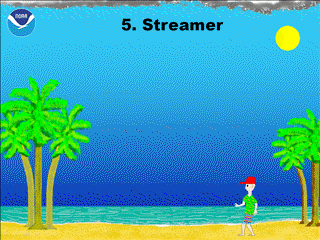
.
.
Video: Lightning Impacts On People
Related Posts:
Lightning Safety
Hail Protection Video
Tornado Safety: What NOT to do
Keep in touch via social media
- Facebook: Justin Berk, Meteorologist
- Twitter: @JustinWeather
- Instagram: justinweather
- Pinterest: justinweather
Get the award winning Kid Weather App I made with my oldest son and support our love for science, weather, technology. Our 2 year anniversary of the release is this November and it has been downloaded in 55 countries. With your support we can expand on the fun introduction to science and real weather:
[/fusion_builder_column][/fusion_builder_row][/fusion_builder_container]

